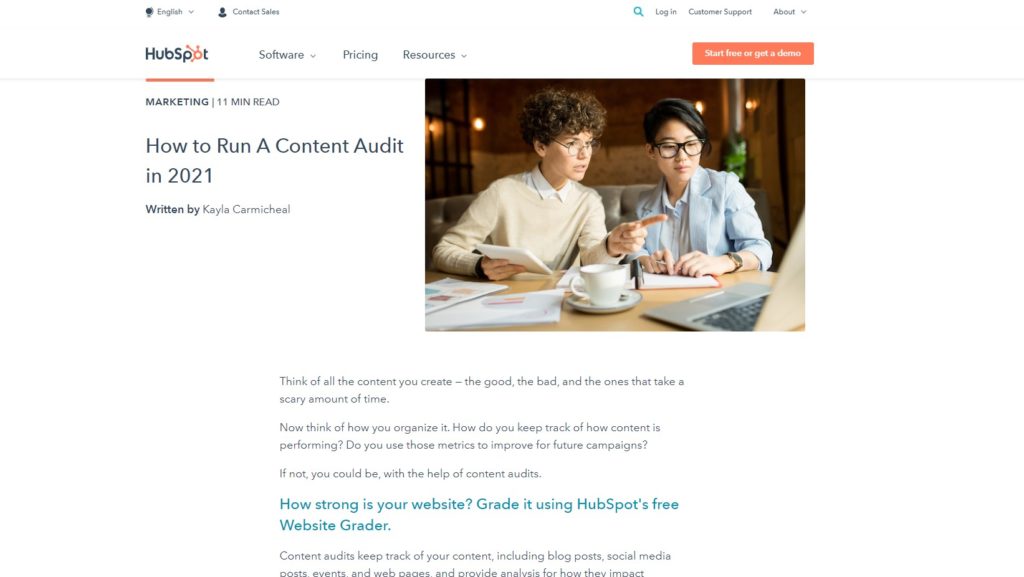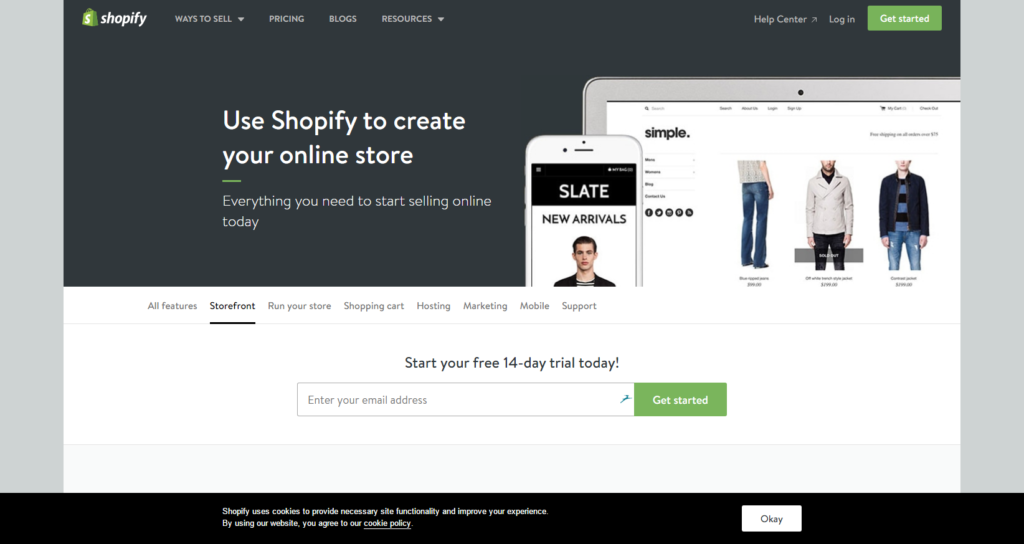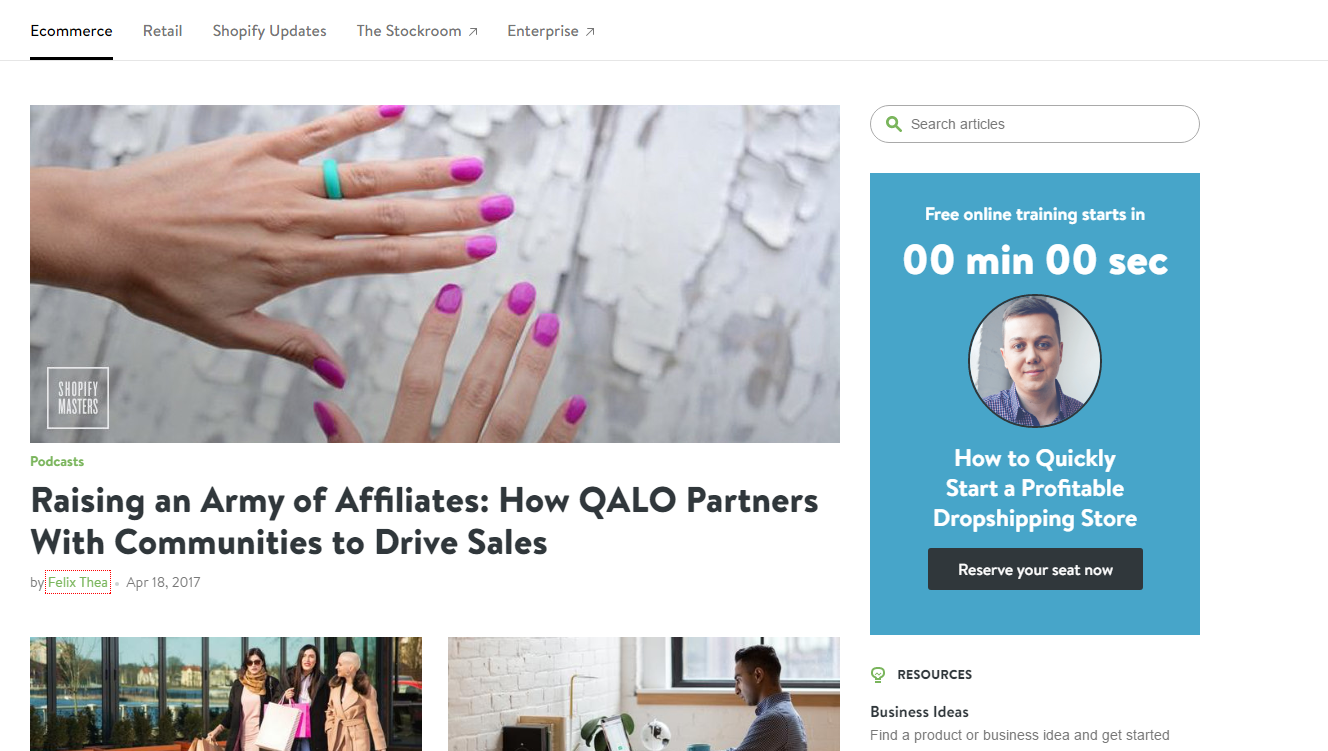5 SEO-Friendly Content Examples and Resources You Should Implement

This article was first published on April 20th, 2017, and was last updated August 2022.
How can you increase your domain authority and relevance through the power of great content? Which brands are making search work for them with strategic content? Here are some examples of great content resources that are both user-friendly and primed for SEO. As well as some tips on how you can marry content and SEO efforts to maximize your SEO ROI.
Table of Contents:
What is an SEO-Friendly Article?
There are several factors that go into writing an SEO-friendly article. It isn’t just about stuffing the paragraphs with as many keywords as possible. Instead, you should be conscious of several key elements as you write your article to make sure it appears higher in search rankings.
Making sure you write an SEO-friendly article will help searchers find your content and visit your website. SEO-friendly content should contain the following key elements:
- Keyword Research: Content should be founded on in-depth keyword research that looks at intent-driven keywords (broad and long-tail) that demonstrate topical expertise and topical breadth. (Learn how to find the right keywords here!)
- User-Friendly: It needs to be user-friendly, shareable, and offer useful insights that aren’t readily discoverable on other websites. Avoid being overly obvious!
- Meet Criteria: Content must offer value by fulfilling the needs of its audience based on the Quality Raters Guidelines (see page 69).
- Link Strategies: Link acquisition and promotion should be at the heart of content production. SEO content isn’t just created for creation’s sake. Targeted and effective link building strategies and promotions through email and social media will be key to your outreach success.
How to Write SEO-Friendly Content
Firstly, it’s important to highlight the key ingredients that all great SEO content contains. Although it can take different shapes and formats, all SEO content has, at its core, a commitment to improving search relevance, domain authority, and matching user intent to maximize conversions.
To make your content SEO-friendly, remember to incorporate the following into it:
- Designate one keyword to be the focus term of the article.
- Support with the focus keyword with semantic and secondary keywords.
- Answer questions fully in the content in order to pass the Needs Met category in the Quality Raters Guidelines (linked above).
- Visual components that are optimized for site speed.
- Use headers to organize content and feature keywords for a greater impact.
- Incorporate internal and external links that will enhance the value of the piece even more (should be something the reader would find valuable and natural).
- Make the URL evergreen and easy to read.
- Add images and other visual elements to enhance the user and page experience.
- Optimize images and videos so they don’t slow down the page speed.
- Assign alt text to images that are descriptive and ADA-compliant.
- Use natural calls-to-action that make sense and support the piece (avoid being overly salesy).
5 Examples SEO-Friendly Content You Can Start Making
1. Create Original Content
Creating original content is a great way to make sure it is SEO friendly. Original content can take the form of case studies, original research or studies, expert roundups, or curated lists you have compiled on topics that are related to your business. The key is to post content that people can’t find anywhere else, because you created it. Also, this type of content is usually supported by data you’ve gathered from a study, test, or questionnaire. So not only is it unique to your business, but you have the research to back it up.
It can also be a great asset for link building purposes. Great content paired with high quality backlinks makes for SEO-friendly content that both search engines and readers will find valuable.
Case Studies
An example of SEO-friendly content is case studies. While there isn’t necessarily keyword value to be had from a case study, it definitely supports the E-A-T and user experience aspects of SEO. Proving that your services have worked for your business or other businesses you’ve provided services to can instill trust in potential new customers that you can also help them.
You should use case studies as an opportunity to talk about how your business does business. How do you interact with your customers and how do you solve problems that are sure to arise? Don’t be afraid to tell a story here. Explain what the issue was, what you did to help (get specific here), and what kind of results you were able to achieve as a result of the strategies you implemented. Visual assets like graphs and charts showing the positive growth and conversions are key – people don’t want to read a huge block of text! Include what is important and relevant to your readers.
Original Research or Data
Similarly to case studies, conducting your own research, tests, questionnaires and surveys, and whatever else you can is a strong indicator of E-A-T if it can:
- Provide value to your readers or customers
- It’s information that cannot be found elsewhere
- It enhances user experience and knowledge on the given topic
- It demonstrates your expertise and credibility on the subject matter
Create content to showcase your data and findings. This can be an ultimate guide, blog article, white paper, and much more. Get creative here! Just make sure that it can be crawled and indexed by search engines. If you plan to create gated content for this, remember to create another article or content piece that can be found by search engines in addition to the downloadable asset.
Expert Roundups
Not sure if people will care what you think? Need some expertise behind your content? Go ahead — just ask.
Getting experts to weigh in on a topic is the perfect way to create content that’s likely to be shared and linked to. And it’s a good chance that other competing websites won’t have this information.
Why is this type of content good for link building? People are much more likely to link back to content that they’ve been featured in themselves. At the very least, they’ll share your content with their engaged personal network. Loads of people have ‘featured in’ pages on their websites: it’s a good idea to target people who obviously care about features and mentions. (And remember, experts don’t need to be world renowned. They just need to be professionals in their field and be able to adequately speak on the topic and provide valuable insight).
A helpful step to take for outreach and link building purposes is to find relevant people on social media. This isn’t necessary to make your content more SEO-friendly, but it can be an extra step to help put your content over the edge of the competition. Your best bet will be to find them on Twitter and LinkedIn. Reach out to them with a concise and personalized email. The busier and more important the people, the harder it’s going to be. Don’t expect to get loads of answers straight away, especially if you’re going in ‘cold’.
Curated Lists
Sometimes you don’t even need experts. A demographic that your audience resonates with (millennials, veterans, nurses, young moms etc) can be enough.

You could even do like Everygirl and just ask your readers to name their favorite tips, influencers, or lifehacks. It’s a way to create great content, but it also increases audience engagement levels and gives back to the community with some free personal brand PR. Win-win. People love curated lists, and they enjoy seeing what others like them are thinking, doing, saying, and feeling.
2. Repurpose Existing Content
Got a great post that’s still driving traffic but needs a bit of an update? The great thing about content repurposing (or recycling) is that you can maximize existing search traffic. Just don’t change the URL and provide an updated version of a post that your audience clearly enjoyed.
Some update ideas:
- Refresh the information and data to reflect recent changes
- Include more or different examples and information that set you apart from your competitors
- Make the post more in-depth to address all possible questions people may have about the topic
- Incorporate relevant and intent-driven keywords into the content
- Break it up with high quality and optimized images
- Include more internal links and improve the calls to action
- Integrate audience feedback and comments into the post
Content repurposing or recycling is a great way to focus your content creation around super valuable, evergreen topics. Using existing URLs that have already been developing authority is also an advantage. This is why structuring your URLs to be SEO-friendly is important – avoid things that can date them including numbers and calendar dates.

Content is valuable and Hubspot’s guide on “How to Run A Content Audit” goes in depth on it. It was recently updated for 2021 and features goals, steps on how to run a content audit, and examples of different tools you can use.
3. Create Ultimate Guides
It’s a common SEO myth that you should write as much content as possible in order to rank well on search engines. This has been disproven but we understand where the confusion comes from.
When you look at what’s ranking, a lot of the results are long-form content pieces like Ultimate Guides. To be clear, you don’t need to write really long content to make it SEO-friendly. But there is a purpose that long-form content like an Ultimate Guide serves.
Ultimate Guides is an effective SEO-friendly content example because they can provide in-depth information about a topic and address people’s questions in one piece. It’s less about the length and more about what you can accomplish in a piece:
- Featuring a lot of valuable information on a single page.
- Structuring headers as questions and providing immediate answers.
- Implementing internal links that provide the reader with additional resources on the subject they may find helpful.
- High quality images that make the content easier to read and provide a visual reprieve (like infographics).
- Sufficient keyword usage to be effective in ranking for terms (while avoiding keyword stuffing).
- More likely to receive backlinks for Ultimate Guides due to the valuable information, links, and high quality images.
When creating Ultimate Guides, remember to be methodical with your keyword strategy. This type of SEO-friendly content is usually designated for ‘question-based queries’ and broad topics that require more in-depth information. The type of traffic it’s designed to attract is still aligned with the service or product you’re offering. However, it tends to be more navigational (seeking information rather than making a purchase).
It’s best to start high-level and featuring general questions on the topic at the top of the page, while providing immediate answers and resources. As you progress through the page, it should follow the buyers funnel: navigation / curiosity traffic up top and conversion-ready traffic at the bottom of the funnel.
By the end of the Ultimate Guide, you should have narrowed down the information to your business and how you can help the reader. Feature a strong call-to-action and provide internal links to other resources on your website throughout the Ultimate Guide. Keeping people on your website for longer has shown to help improve conversions.
You should also consider adding infographics into your ultimate guides. Infographics can seem a bit blah and spammy. If done right, they are a supremely versatile form of content that transitions easily from website to social media, and back again. The key to creating an effective infographic is to focus on useful data, insightful data that isn’t obvious or easy for anyone to figure out on their own. Also, include content in and around your infographic. Embellish the infographic and spell it out in words because search engines can’t effectively crawl images.
Need an example? Take a look at our Ultimate Guide to White Label SEO Marketing we created to help address common questions and better explain what this is, how it’s helpful for businesses, what challenges exist, and much more.
4. Create Spoke Articles
After you have created your ultimate guide, you should create content and write articles that cover topics related to your guide. Think of your ultimate guide like a hub of a wheel and the articles you write are the spokes shooting out of the center hub. This spoke pices should be smaller and cover niche topics that not only support but also link back to the overarching Ultimate Guide.
The goal of spoke articles is to use ranking keywords and go more in-depth on topics that weren’t covered in the Ultimate Guide. And there are several ways to find topics for potential articles.
Here are some great ways to identify spoke article ideas:
- Long-tail keywords
- Question-based queries (use tools like Search Console or SEMrush to find this)
- People Also Ask questions – these are actual questions people are searching for
- Suggested Searches (bottom of the SERP)
- Competitor analysis – what are your competitors writing about?
5. Dedicated Keyword Landing Pages
A popular SEO content strategy is to create targeted, user-oriented landing pages that sum up your core offering and focus around a key call-to-action (CTA). That call to action might take the form of an email sign-up, a downloadable content resource, or even signing up for a product. What’s the key to a good landing page?
- Effective keyword targeting: you don’t want to compete with other pages (like your homepage)
- No distractions for the user
- A clear value proposition: what am I getting out of this?
- A clear understanding of user intent
- A coherent user journey that ends with an action
Deploying a landing page too soon in the customer journey will seem pushy and jarring. Leaving it too late, however, can mean that you lose out.
For your business, try to map your landing pages against key customer decisions, questions, and hesitations that are going to send them to search engines.
Some things you may want to address:
- Competitor comparison: how well does your offering stack up?
- Pricing: what do people get for their money?
- Cases and testimonials
- Features and integrations
- Success stories
- Burning questions (is this worth the money etc)

Remember, your landing page calls to action will change depending on context. Above, Shopify’s online store creator page is all about funneling the user towards the offer of a free trial. And their call to action doesn’t change even when the user filters across the top menu options. For users and search engines, this means that seven unique pages and URLs all amount to the same action and purpose.

On the blog landing page, the call to action is much more subtle. It comes in the form of a suggestive banner ad to join a free webinar that’s about to commence. Think about how you can deploy urgency in the same way: it’s one of the most effective motivators.
SEO-Friendly Content Makes the Difference
Filling your site with SEO-Friendly content can be the determining factor in a user finding and exploring your site after doing an online search. But creating unique, valuable and SEO-friendly content isn’t a small task. It can take time, research, and money to create the kind of content that will draw others to your site.
At Boostability we offer white label SEO services that allow you to focus on the other crucial areas of your business while ensuring that your clients are taken care of. We get websites ranking in the top 10 results on Google within a matter of months. Contact us today for more information!

